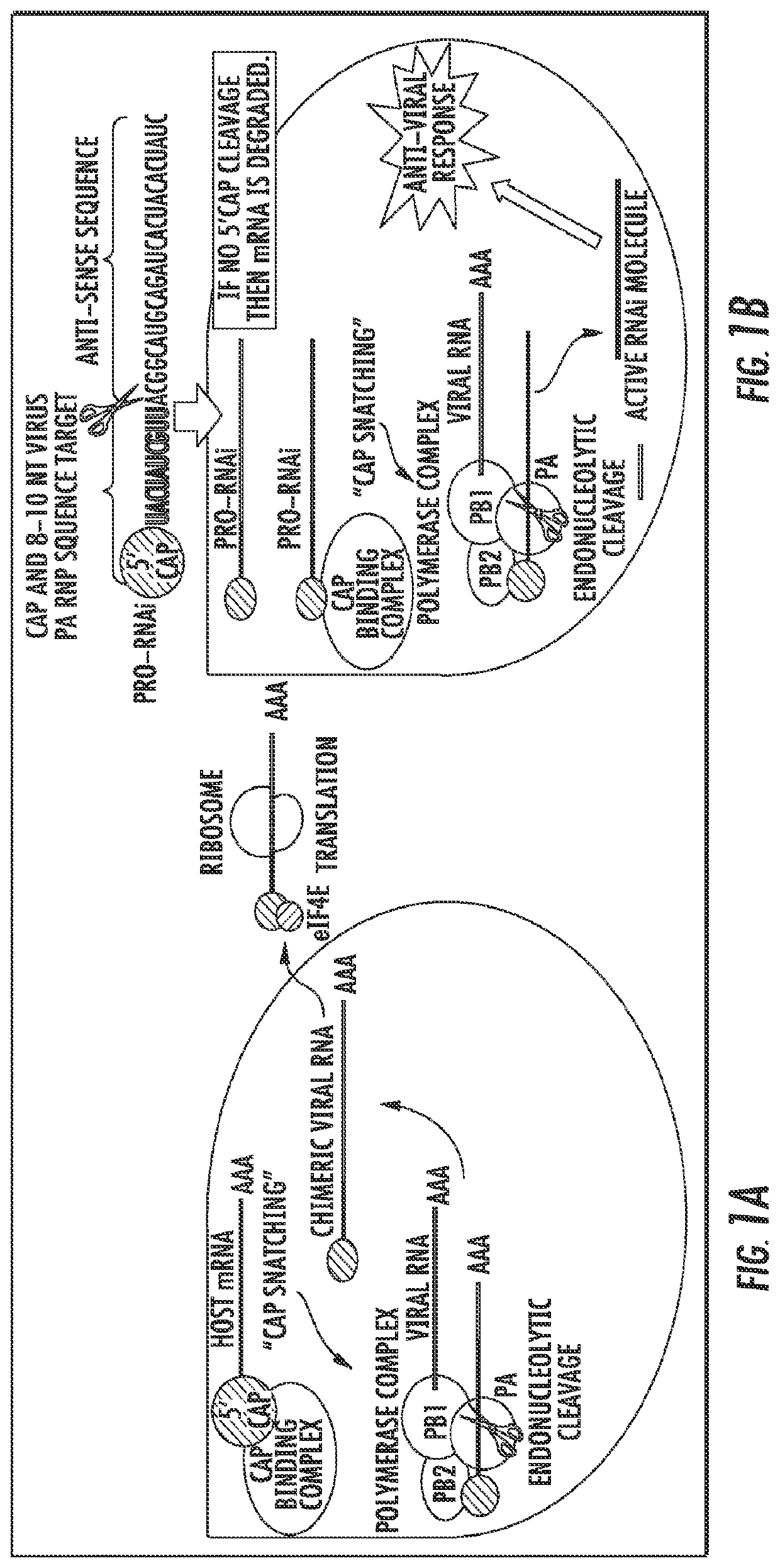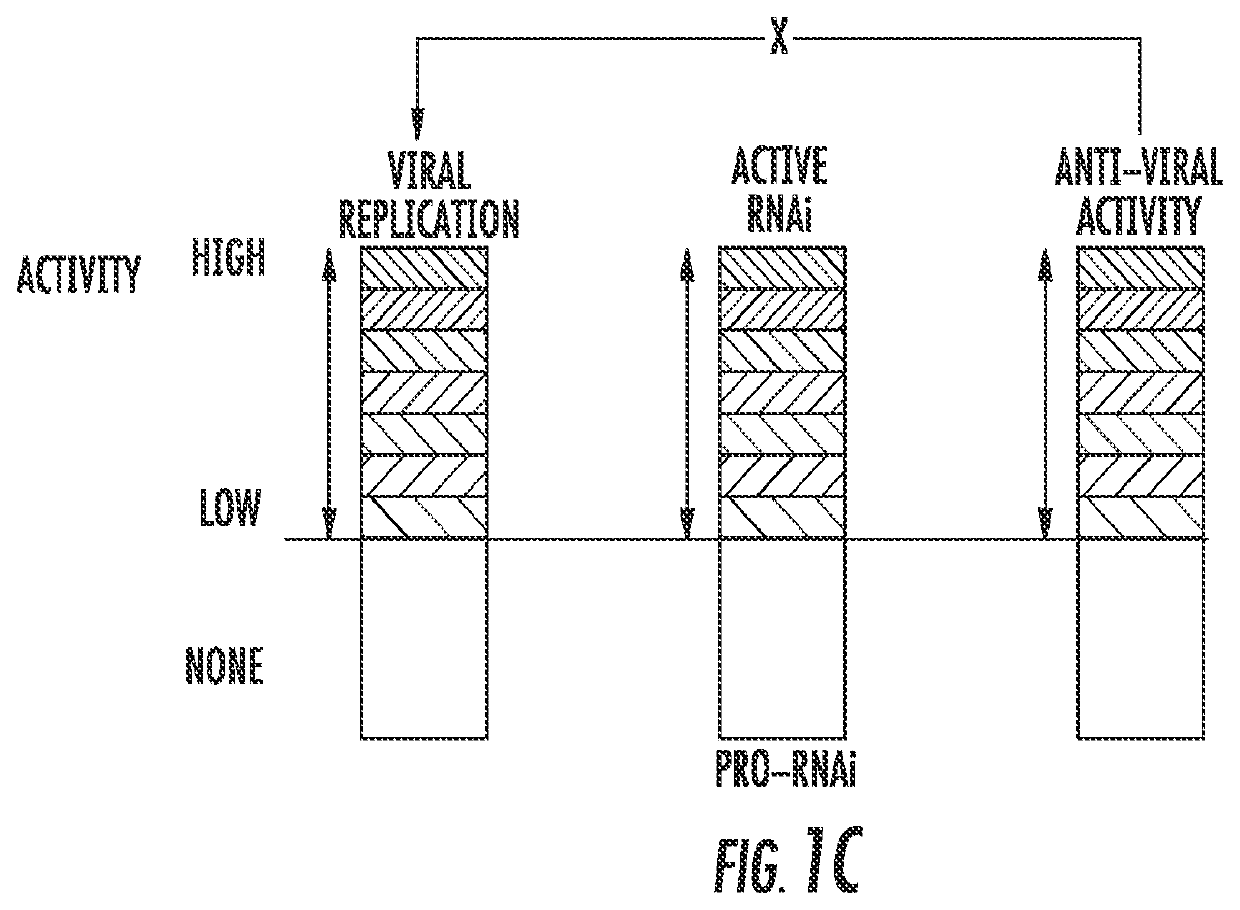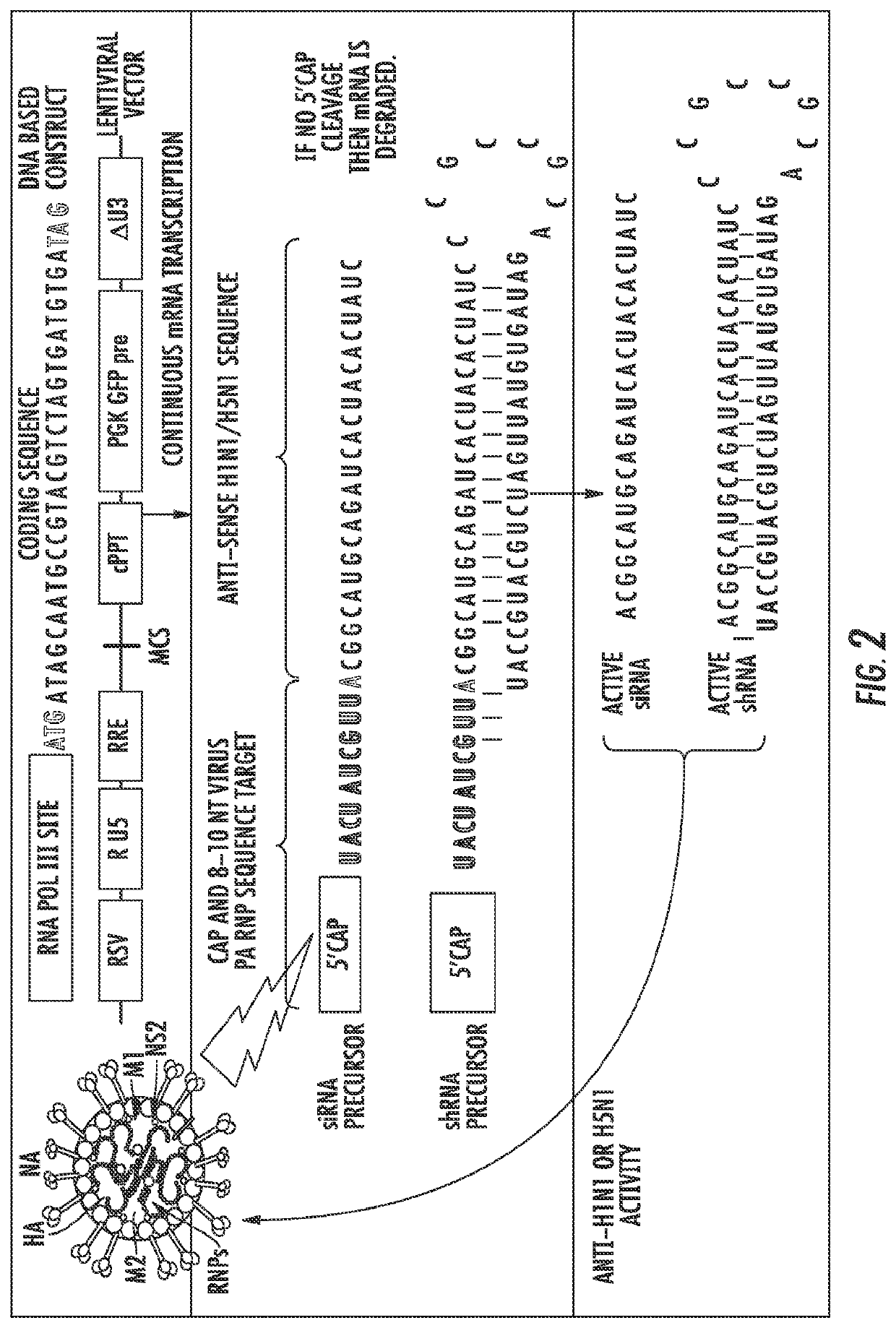Influenza-activated constructs and methods of use thereof
a technology of influenza-activated constructs and constructs, applied in the field of molecular genetics and immunology, can solve the problems of inability to completely protect against unexpected strains of viruses, inability to fully protect against viruses, and major causes of human mortality and morbidity, so as to prevent the effect of preventing sepsis or cytokine storm
- Summary
- Abstract
- Description
- Claims
- Application Information
AI Technical Summary
Benefits of technology
Problems solved by technology
Method used
Image
Examples
example 1
RNAi Constructs for Treating or Preventing a Cap-Snatching Virus Infection
[0089]The present experiment was designed to develop constructs that can be activated from an unactive form by the presence and replication of influenza viral RNA utilizing Cap-snatching of the host mRNA 5′ Methylguanosine cap.
[0090]Cap-Snatching is a mechanism with which several classes of RNA viruses, such as influenza, prime the synthesis of their mRNA (FIG. 1). In typical Cap-Snatching, a viral RNA-dependent, RNA polymerase (RdRP) complex binds to a copy of its genomic RNA, and then subsequently binds to a host cell mRNA transcript at the 5′,7-methylguanosine cap. This initiates RdRP endonuclease activity, resulting in the cleavage of approximately the first 10 nucleotides of the 5′ capped host mRNA. The virus then uses this capped 10 nucleotide sequence to prime the transcription of its own RNA genome. The presently disclosed approach takes advantage of intracellular viral Cap-Snatching to activate an ina...
example ii
RNAi Constructs for Diagnosing a Cap-Snatching Virus Infection
[0103]For diagnostic methods, a DNA or viral construct are introduced into a cell suspected of a Cap-Snatching viral infection which contains a fluorescent indicator such as, but not limited to, Green Fluorescent Protein (GFP), which is constitutively expressed. Another DNA or viral construct is introduced into the cell with an inactivated RNAi sequence specific against the GFP sequence. These constructs are applied and internalized in vitro to suspect cells from a patient. In the presence of the Cap-Snatching viral activity on the inactive RNAi construct, the RNAi response becomes activated against the constitutively expressed GFP. This results in an RNAi response by the cell against GFP expression, and thus the loss or decrease of GFP signal which indicates the presence of Cap-Snatching viral activity.
PUM
| Property | Measurement | Unit |
|---|---|---|
| size | aaaaa | aaaaa |
| size | aaaaa | aaaaa |
| resistance | aaaaa | aaaaa |
Abstract
Description
Claims
Application Information
 Login to View More
Login to View More - R&D
- Intellectual Property
- Life Sciences
- Materials
- Tech Scout
- Unparalleled Data Quality
- Higher Quality Content
- 60% Fewer Hallucinations
Browse by: Latest US Patents, China's latest patents, Technical Efficacy Thesaurus, Application Domain, Technology Topic, Popular Technical Reports.
© 2025 PatSnap. All rights reserved.Legal|Privacy policy|Modern Slavery Act Transparency Statement|Sitemap|About US| Contact US: help@patsnap.com



